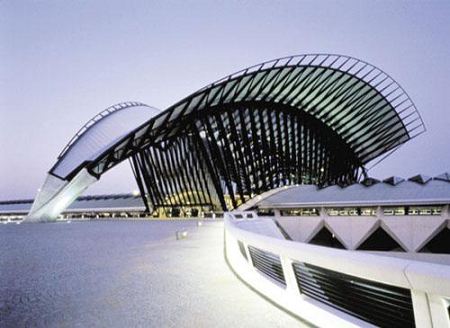
Renderwow
The lack of a small detail may destroy the balance of the entire rendering scene. Even small details make up specially for you to sum of the renderings. It is important during the process of rendering to look at any potential problems, no matter how small it may be.
1、Don't be afraid of the dark
If the CG works of a rendering have been blown off, you can try to get a part of the scene that doesn't get enough light, or just make it close to black. But it is important that the dark parts of the rendering still need to show some outlines, let others know there is something there. If for some reason there is a part of your rendering that always shows up dark even after adjustments, it would be best to fix that region of your rendering in the modeling process, and that way it will actually save you more time.
2、A dark scene does not equal a gloomy scene.
Don't think you can make a night scene or a dimly lit indoor scene with light intensity. Reduce the fill light intensity, even if you add a layer of blue to cool it down. Remember to give enough light to certain elements in the scene. The main light source with 100% light intensity takes a character from the side (or a slight light from the rear), Then fill the whole body with a deeper fill. The effect is much better than the negative light.
3、Reasonable lighting
Every light in the scene should represent a reasonable light source in reality. Does the main light source represent a lamp? The transmission of a window?The sun? If you want to add a little bit of irrationality to the lighting location and intensity. In order to get a better effect, make sure that this property is logically coherent.

4、Set your lights apart
Many people use the same set of light sources to illuminate a pile of objects in the scene. In this way, you have to set the type for each light, Dispersion intensity, Irradiation target, Shading screen etc. The light quality of each frame is guaranteed to be unified. If the whole scene is separated, set the light on them so that you can have a better grasp of the light of each element. The light received by each character comes from the light source that is individually configured for it.
In CG movies, each character has unique lighting Settings (main light, fill light, and some backlight). These lights are restricted to an important part of the role, and moving with the characters (but not rotating, they are aligned to the global coordinates) so you can better control the lighting of each character, adjusting one does not affect the other. Separate rendering can leave you with a lot of time to adjust the lighting. And then you can combine them with synthetic software.
5、Learn to use synthetic software.
Whether it's using PS/Gimp for static frames, Or the Nuke/Shake/AE processing image sequence, Synthetic software is a must. In a 2D environment, it is much faster to adjust colors, blur edges, adjust the environment fog and special effects, adjust the reflection, and make all kinds of revisions more quickly than in 3D software.
Recommended layered rendering, You don't have to re-render one of the elements. Don't spend too much time on 3D software to get the perfect rendering. Extracting useful layers from software such as 3D, 2D and particle engines, then edit it in the synthetic software and mix it up.

6、Use the depth of field
The picture taken by the camera, It's going to be something that's too close to the focus or too far away. Also pay attention to the depth of field when rendering, the depth of field can be achieved in 3D or 2D, but remember to use the blur and not gaussian blur.
7、Linear workflow
Linear workflow is important for better control of light.
8、synthetic
Later synthesis can make your work subject more specific. Put the focus of lighting and adjustment on the main body. Get rid of those distractions, your viewers will focus on the subject of your work.
9、Calibration display
The color order, brightness and contrast of the monitor can be adjusted with the color palette. A lot of rendering too dark, It's because the original author's monitor is too bright.
10、The atmosphere
The color of the object is one of the reasons that CG images are seen through. Looking through the air at distant objects, the atmosphere has color and opacity, the light that will stop and spread. If your object has a distance, you can add some atmosphere to it.
Render a z-depth channel, put it in the synthetic software, adjust with extension, gamma, curve tool, add the mist color multiplier, and then you put it on top of the image. This extra layer of atmosphere can significantly increase the credibility of the work, and it creates depth.